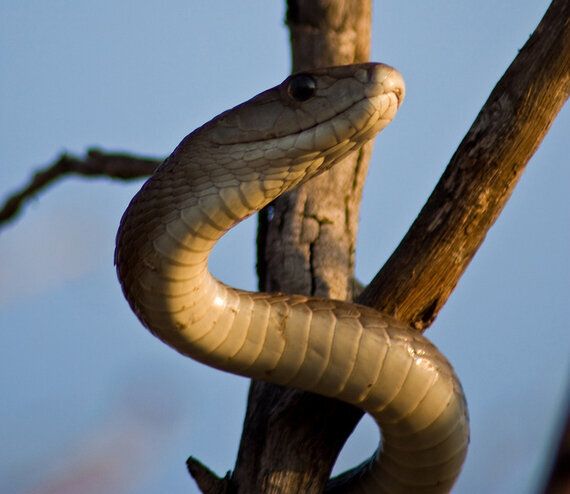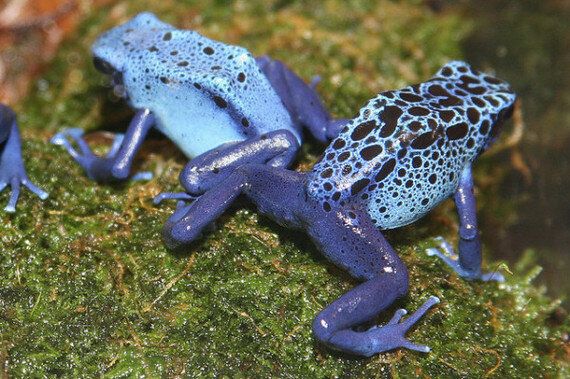This week has been all about deadly animals around the world, so today we thought we should take a look at the world's most dangerous and deadly regions where you might just find yourself face-to-face with some of these creatures.
Australia
The Land Down Under is high on many backpacker's places to visit, with its rich variety of fauna and being home to some of our best-loved animals, but it is a region fraught with danger. Backpackers beware of what lurks behind the bush!

Saltwater Crocodiles
Where: Northern Australia; found in parts of the Northern Territory and thriving in multiple river systems near Darwin.
Other locations: Eastern coast of India, New Guinea and a sporadic population in Indonesia and Malaysia.
Attacks: Globally there are an estimated 20-30 attacks per year.
Fatalities: Approximately 5 fatal attacks reported per year in Australia but experts predict there are significantly more unreported fatalities elsewhere.
Box Jellyfish
Where: Along the northern coastal areas of Australia from Brisbane across to Darwin and alongside the Great Barrier Reef.
Other locations: It is a myth that the jelly fish only lives in Australia, they can also be found in parts of Southeast Asia.
Fatalities: Over the last century they have killed about 60 people in Australia. In the Malay Archipelago lethal cases are far higher; some 20 to 40 people die from stings annually in the Philippines alone. However, because death certificates are not required in many countries within the range of box jellyfish, fatalities may be seriously underestimated.
Funnel Web Spider
Where: Distribution is primarily South of the Hunter River to the Illawarra region, and west to the Blue Mountains in New South Wales.
Other Locations: Unconfirmed reports claim that the Sydney funnel-web spider has been found as far away as Canberra, 250 km from Sydney, and even Gloucestershire in England.
Fatalities: In the last 100 years 27 deaths in Australia have been recorded, but the development of antivenom has prevented further deaths.
Africa
Known for its safaris, national parks and wilderness camps, Africa offers up a veritable feast of culture, species and opportunities for photography. Whilst it is easy to get carried away, be sure to consider all the continent has in store, and take care lest the dining tables turn and you end up as part of a very different feast.

Lion
Where: Throughout sub-Saharan Africa, except for forests and deserts.
Other locations: The subspecies, Asiatic Lions, survives only in and around the Gir Forest of north-western India.
Attacks: Surprisingly lions are actually inactive for about 20 hours per day, but their ferocity is well documented.
Fatalities: Lions are responsible for 70 fatalities a year in Tanzania alone, it is estimated that in total lions take 200 human lives a year. As a group, Big Cats are responsible for an average 800 human fatalities per year.
Black Mamba
Where: The grassland and savannah woodland/shrubs that extend all the way from southern and eastern Africa to central and western Africa. Black mamba's often make use of abandoned termite mounds and hollow trees for shelter.
Other locations: Endemic to Africa
Attacks: The Black Mamba is a "notorious" snake, gaining its bad reputation from aggression and ferocity unparalleled by any other snake. It is a territorial animal, and will actively defend its territory very aggressively. Its tendency to attack unprovoked and its immense speed makes it both the fastest land snake in the world, and the most aggressive.
Fatalities: Black Mamba bites have caused many amputations, lost limbs and lives with the number of fatalities averaging at around 5-10 a year.
Northern and South America
The Americas and their coasts harbour all sorts of predatory wildlife, from lethal little critters to huge powerful beasts.

Great White Shark
Where: The United States has the greatest concentration of Great Whites worldwide, based in the Atlantic Northeast and California.
Other locations: Found in almost all coastal and offshore waters which have water temperature between 12 and 24 °C. Commonly found in South Africa, Japan, Australia, New Zealand, Chile, Hawaii and the Mediterranean.
Attacks: While great white sharks have killed humans, they typically do not target them and most attacks seem to be "test-bites". Having said this, from 1990-2011 there have been a total of 126 worldwide, unprovoked Great White attacks, with the United States having more attacks than any other country. On average there are around 50-70 reported attacks every year.
Fatalities: 26 out of the 126 attacks listed above were fatal. On average sharks claim around 5-15 lives per year.
American Alligator
Where: These are mostly found in the South-eastern United States, from the Great Dismal Swamp in North Carolina south to the Everglades National Park in Florida and west to the southern tip of Texas.
Other locations: As the name suggests this species is endemic only to the South-eastern United States.
Attacks: Since 1948, there have been more than 275 unprovoked attacks on humans in Florida, of which at least 17 resulted in death. More recently alligators have killed 12 people from 2001 to 2007. More than 90% of alligator attacks in the USA have occurred in Florida.
Fatalities: On average 0-5 per year
Blue Poison Dart Frog
Where: Generally found in tropical rainforests, including in Bolivia, Costa Rica, Brazil, Colombia, Ecuador, Venezuela, Peru, Nicaragua, and non-native to Hawaii.
Other locations: Endemic to humid, tropical environments of Central and Latin America.
Attacks: Whilst the frogs do not attack as such, they are probably the most poisonous animal on earth. The 5cm poison dart frog has enough venom to kill 10 adult humans. Only 2 micrograms of the toxin, an amount which would fit on the head of a pin, is capable of killing a human or other large mammal.
Fatalities: It is uncertain how many deaths go unreported, but it is estimated at 0-3 deaths a year.
By Greta Hedley-Miller
Check out 'Into the Wild' for more articles like this.
Greta Hedley-Miller is an Online Journalism Intern for Frontier, a non-profit conservation NGO that helps people plan their gap year with over 300 opportunities to volunteer abroad and take part in adventure travel across the globe.
